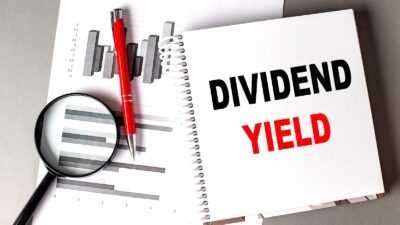Earning a second income by investing in UK shares paying dividends is a simple idea – but it can be a very lucrative one. It does not even require having a lot of money. In fact, an investor can start with nothing.
From zero, putting aside £200 a month to invest, here is how I would target an annual second income of around £19,251.
Setting the right expectations
Before I continue, I want to be clear that as I see this as a realistic plan, it is also important to have realistic expectations about timelines.
Should you invest £1,000 in Aviva right now?
When investing expert Mark Rogers has a stock tip, it can pay to listen. After all, the flagship Motley Fool Share Advisor newsletter he has run for nearly a decade has provided thousands of paying members with top stock recommendations from the UK and US markets. And right now, Mark thinks there are 6 standout stocks that investors should consider buying. Want to see if Aviva made the list?
So my example below involves putting aside £200 a month starting this October, with an eye on receiving an annual second income stream after 30 years.
Getting ready to buy dividend shares
Buying shares that I hope can pay me large dividends is key to my income plan. I can keep that income passive by benefitting from investing in large, already successful firms.
So I would start by choosing a share-dealing account or Stocks and Shares ISA into which I would pay my £200 each month.
Going from zero to £19,251 a year
With that money, I would buy shares and reinvest dividends along the way (something known as compounding).
Imagine I could invest £200 a month and achieve a compound annual growth rate of 7.5%. After three decades, I ought to have a portfolio worth almost £257,000. Invested at an average dividend yield of 7.5%, that would let me earn £19,251 each year as a second income.
Setting a realistic target
Is 7.5% achievable? In the current market, I think it is, while sticking to proven blue-chip companies. A number of household names in my portfolio currently offer annual dividend yields well above 7.5%, from Legal & General to M&G.
Not only that, but remember that my target is a 30-year one. So it may be that I invest in a share that yields less than my 7.5% target today but, thanks to dividend growth along the way, its compound annual growth rate after 30 years is actually 7.5%, or even higher.
Buying the right income shares
In advance, it can be hard to know. That is one reason why, from day one, I would diversify my growing investment portfolio across a range of different UK shares.
I would look for shares that I think had the potential to maintain or grow their annual dividend per share in the coming three decades.
For example, insurer Aviva (LSE: AV) has a yield of 7.2%. It has also been growing its annual dividend per share by a handy clip since a 2020 cut.
I think the share – which income investors should consider buying – might be able to keep growing its payout in future. It benefits from operating in a large, resilient business area. Strong brands, a large customer base and centuries of underwriting experience all help give it a competitive edge.
Aviva is heavily reliant on the UK market, so any price war to attract customers could hurt it worse than more internationally diversified rivals. Still, the business has been improving its performance in recent years and shareholders are benefitting in the shape of passive income.








